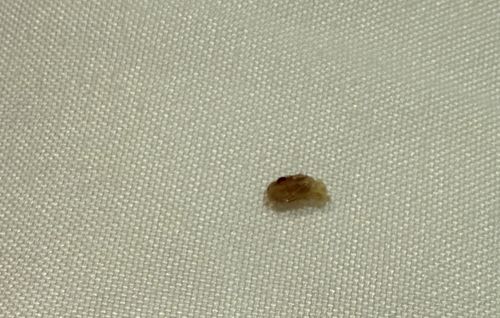Bed Bug (nymph or recently fed adult)
Scientific Name: Cimex lectularius
Order & Family: Hemiptera, Cimicidae
Size: Nymphs are 1.5 - 4.5 mm, adults are 4-5 mm (flat, oval, brownish-red), but can appear larger and more reddish/swollen after feeding.

Natural Habitat
Primarily human dwellings, especially beds, mattresses, bed frames, and nearby furniture. Can also be found in cracks and crevices in walls, behind wallpaper, and electrical outlets.
Diet & Feeding
Exclusively hematophagous, feeding on the blood of warm-blooded animals, primarily humans. They typically feed at night while their hosts are sleeping.
Behavior Patterns
Nocturnal, hiding in cracks and crevices during the day. Attracted to CO2 and body heat. They aggregate in 'harborage' areas. Females lay 1-5 eggs per day, totaling hundreds in their lifetime. Nymphs molt five times to reach adulthood, requiring a blood meal between each molt.
Risks & Benefits
Potential risks include itchy bites, skin irritation, secondary skin infections from scratching, and psychological distress (anxiety, insomnia). While not known to transmit diseases in humans, their presence is a nuisance and can be difficult and costly to eradicate. There are no known benefits to humans or the ecosystem.
Identified on: 11/3/2025